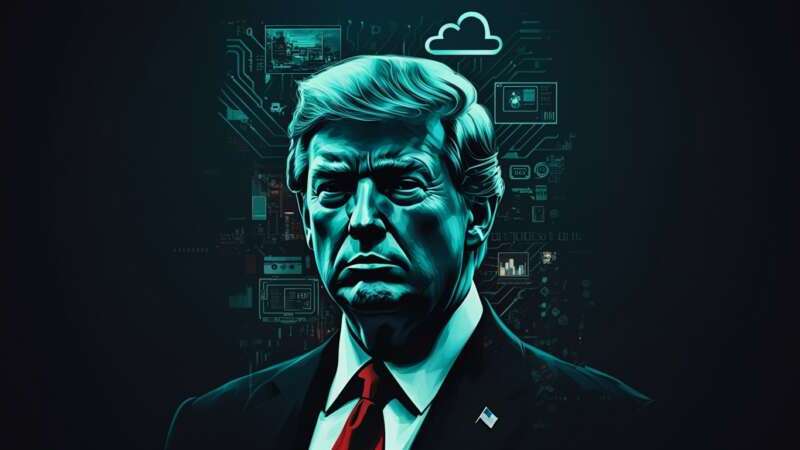
President Donald Trump signed a series of executive orders on May 23 that aim to accelerate nuclear energy development by four-fold over current production levels in the next 25 years with the goal of supporting artificial intelligence technology innovation.
The orders will bolster the building of nuclear reactors set to serve as “reliable, high-density power sources” that aren’t susceptible to foreign threats or power grid failures, according to the White House orders. Under those orders, the reactors will be designated as defense critical electric infrastructure.
“We’ve got enough electricity to win the AI arms race with China,” said Secretary of the Interior Doug Burgum as Trump signed the orders in the Oval Office. “What we do in the next five years related to electricity is going to determine the next 50 because it’s the first time in history where electricity can be translated into intelligence.”
One of Trump’s orders directs Secretary of Energy Chris Wright to establish AI data centers within 48 states and the District of Columbia – but excluding Alaska and Hawaii. Those centers – designated as critical defense facilities – will be located at or operated in coordination with the Department of Energy (DoE) facilities.
Trump also tasked Wright with selecting at least one DoE site for using and deploying privately funded advanced nuclear reactor technologies – which his directive said could be used to power AI data centers and other national security priorities.
“Advanced nuclear reactors include nuclear energy systems like Generation III+ reactors, small modular reactors, microreactors, and stationary and mobile reactors that have the potential to deliver resilient, secure, and reliable power to critical defense facilities and other mission capability resources,” the order reads.
The order’s deadline for the first operational advanced nuclear reactor is set for some time within the next 30 months.
Another of Trump’s orders also granted Wright authority to approve some advanced reactor designs and projects – overhauling the independent Nuclear Regulatory Commission which has been responsible for regulating the U.S. nuclear industry for five decades.
“Mark this day on your calendar, this is going to turn the clock back on over 50 years of over regulation of the industry,” said Burgum.
The latest series of executive orders follows other directives from the Trump administration to power AI, which has included using the coal industry to fuel the large power demands of data centers.
Total electricity consumption is expected to rise 6 to 12 percent by 2028, compared to 2023, according to the DoE. Currently, the United States’ 94 nuclear reactors supply around 19 percent of U.S. electricity compared to fossil fuels’ 60 percent, and renewables’ 21 percent, according to the U.S. Energy Information Administration.
Using nuclear-sourced energy to power AI is not a new idea – Rep. Gary Palmer, R-Ala., had suggested earlier this year using small modular reactors (SMRs), which are compact nuclear reactors designed for scalable and safer power generation, to power the technology.
“We could fuel a fleet of nuclear reactors for over 100 years,” Rep. Palmer said during a congressional hearing in April on how to power AI, while also noting that changes in regulations would be necessary to innovate the reactors.
However, some in industry have questioned whether the latest orders will succeed in boosting the nuclear industry which has seen the shutdown of multiple reactors in recent years.
“We welcome the Administration’s efforts to boost development and deployment of nuclear power,” said Judi Greenland, president and chief executive officer of the think-tank Nuclear Innovation Alliance, in a statement. “However, adequate staffing and funding are required for these goals to be met. Recent DOE staffing reductions and proposed budget cuts undermine the Department’s efforts and make it harder to implement these executive orders.”
